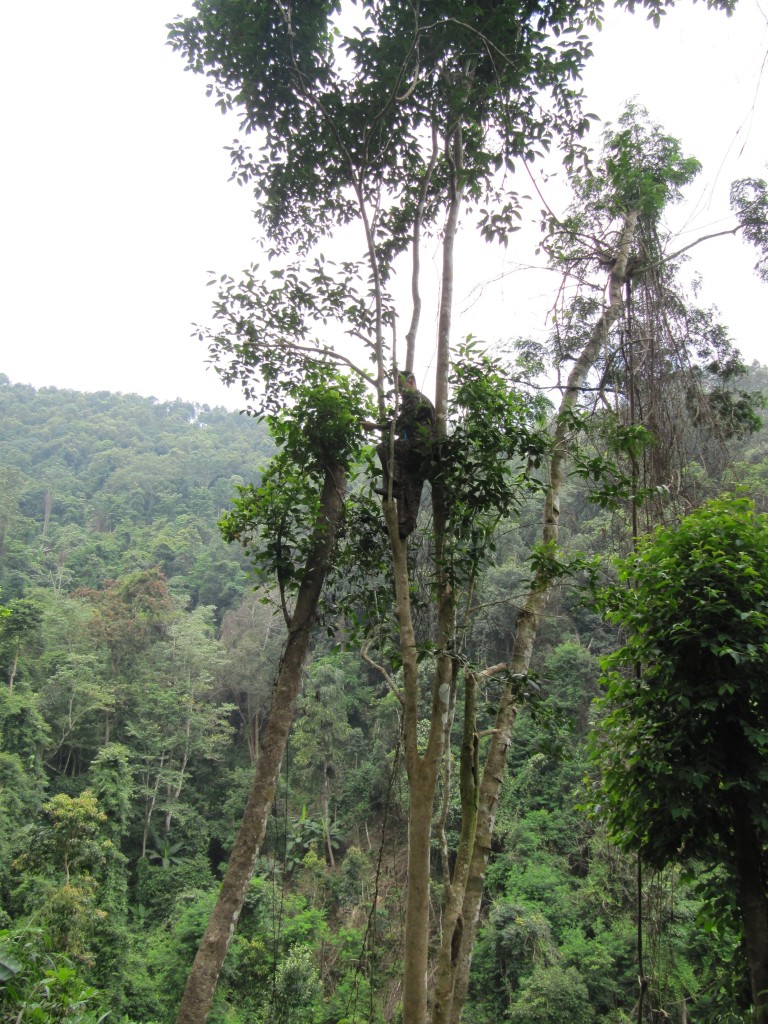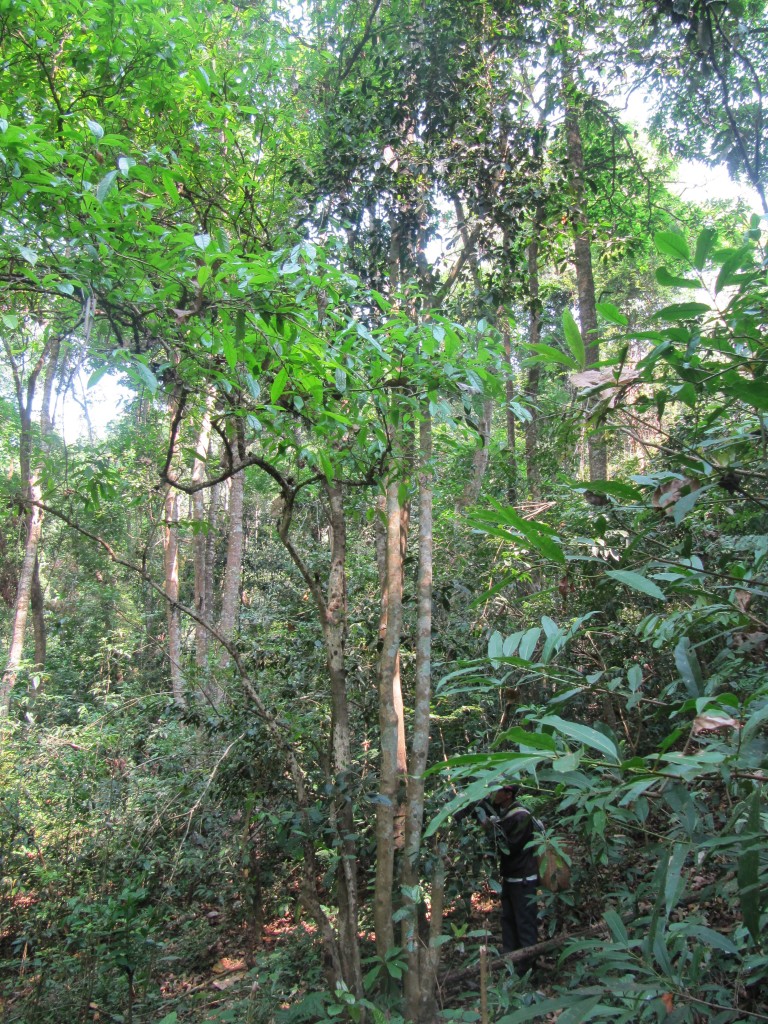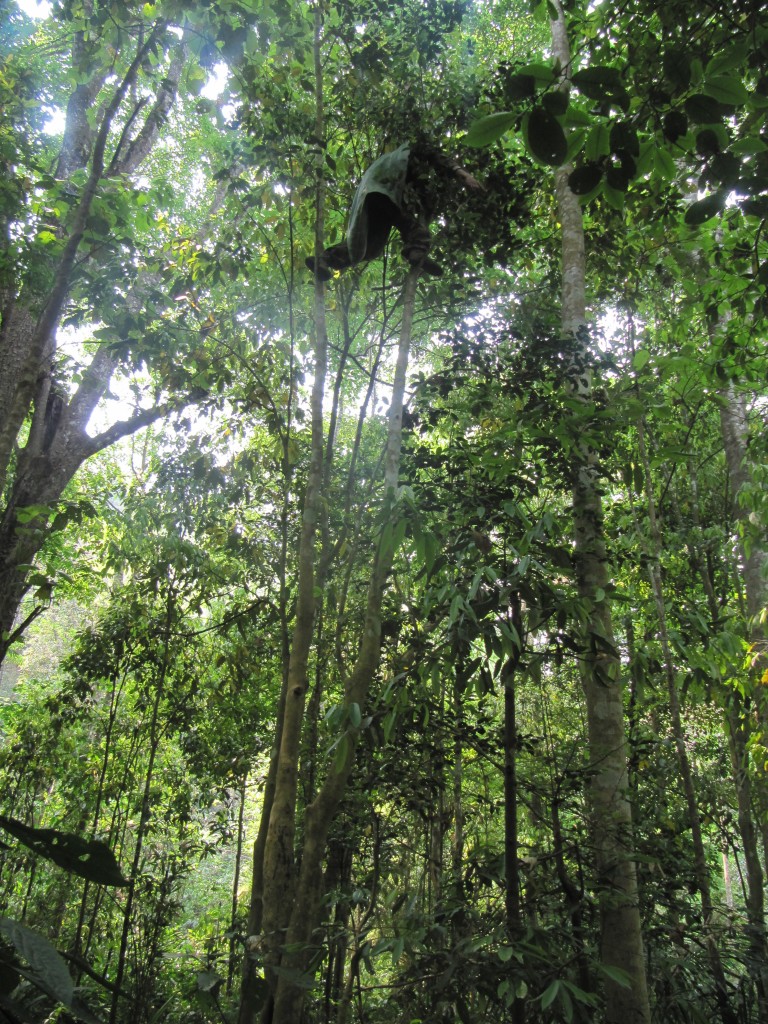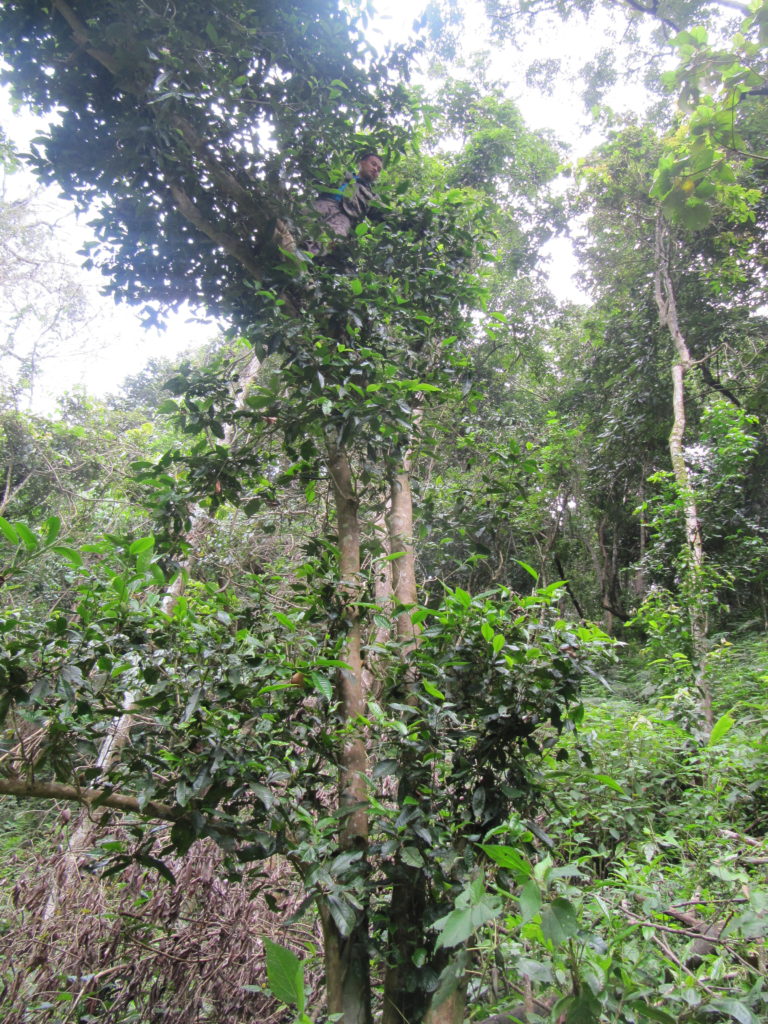The photographs below are of tea trees growing in the wild. However, none of them are thought to be ‘wild’ trees. They are trees that had for many years, been left untended and are not known to have been planted by anyone.
What might be referred to as ‘wild’ tea is tea that is generally coming from one of two sources: One is from trees that are growing naturally in the wild and that continue to expand and varify naturally. These trees could be a species of wild tree or a cultivated variety.
Southern China Botanical garden has this to say: ‘Because of extensive cultivation, it is often difficult to know for certain whether specific collections of var. sinensis and var. assamica are wild, cultivated, or escaped. For this reason, the actual wild distribution of these two varieties is uncertain.’ (see below for link)
The second source is from trees that were originally cultivated and have been left to go ‘wild’. Sometimes referred to as huang ye cha or ye fang cha. These trees are generally found in areas populated by humans. These are not ‘wild’ trees. From a botanical point of view, wild tea trees are different from cultivated tea trees, and rightly belong to a different ‘group’ outside of the family of plants known as ‘tea’.
The tea tree above is several metres tall and was not known to have been planted by the current caretakers of the land, which is in ‘guo lin’ or national forest. They and their ancestors are not known to have been tea cultivators. They have become so in recent times.
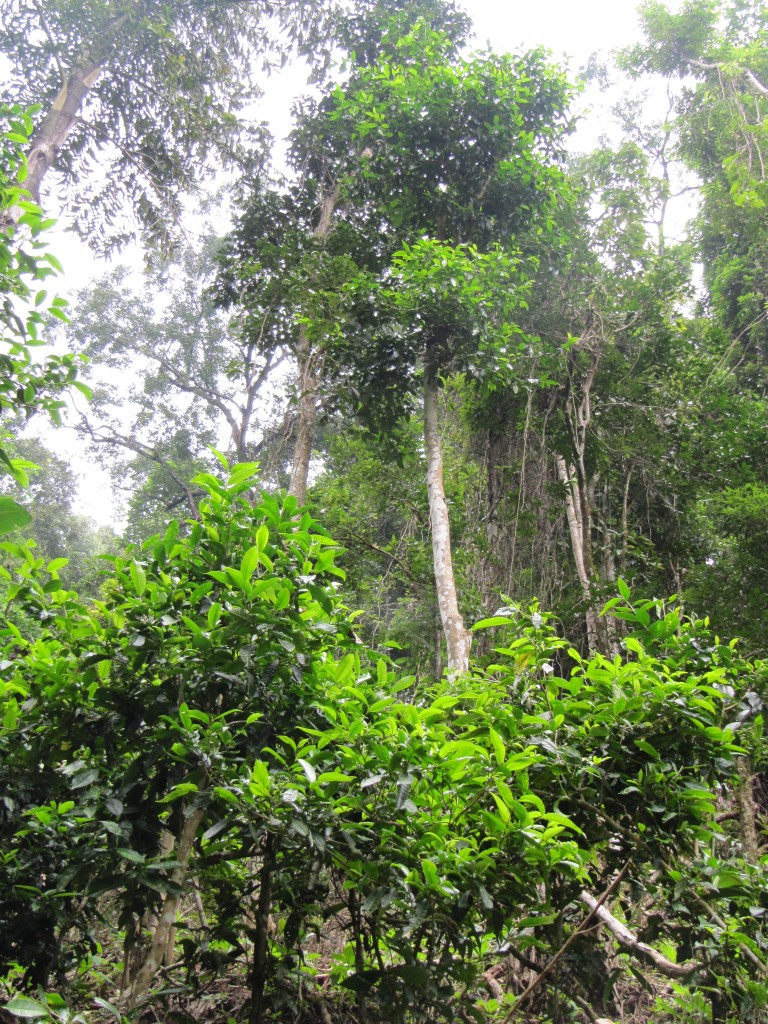
Tea tree and smaller trees in front which have either seeded or grown from the root of the larger tree
The smaller trees here are also not known to have been planted and are thought to have self-seeded. The land has, in the last few years, been cleared around the large tree. Prior to that, there was a tree canopy which would have encouraged the tea tree to grow quite tall. Hence, tall trees do not necessarily mean old trees. When sinensis assamica is left untended in this region it grows very quickly.
The tree above, which also takes a couple of hours’ walk in the forest to get to, was cut back, probably some time in the latter half of 20th century, and has consequently produced four main trunks – one is broken.
The tree above has also been cut back at some time. The tree canopy has caused it to produce rather slender trunks.
Here is another tree that has been coppiced at least twice.
http://www.efloras.org/florataxon.aspx?flora_id=610&taxon_id=200014043

